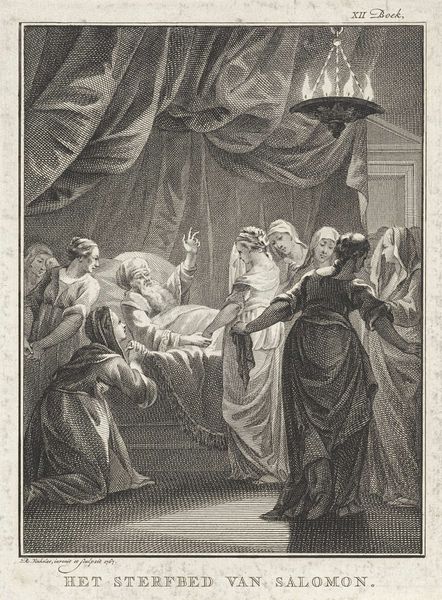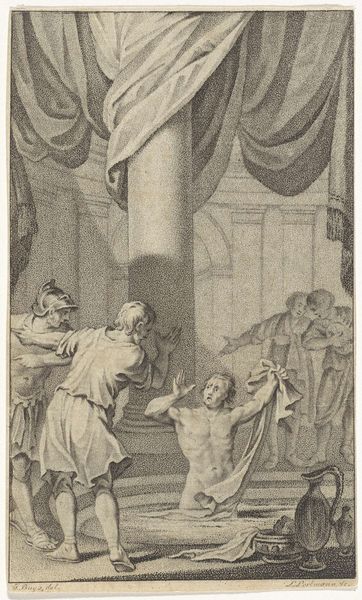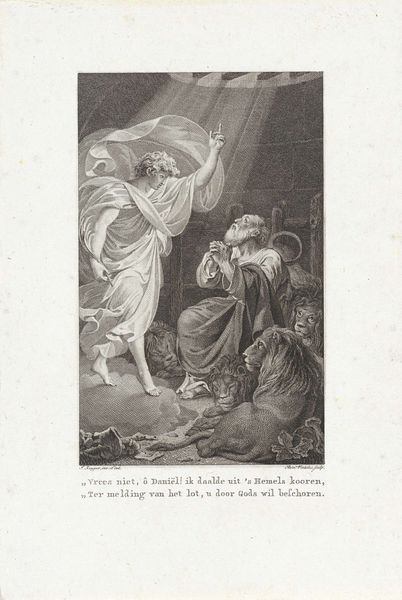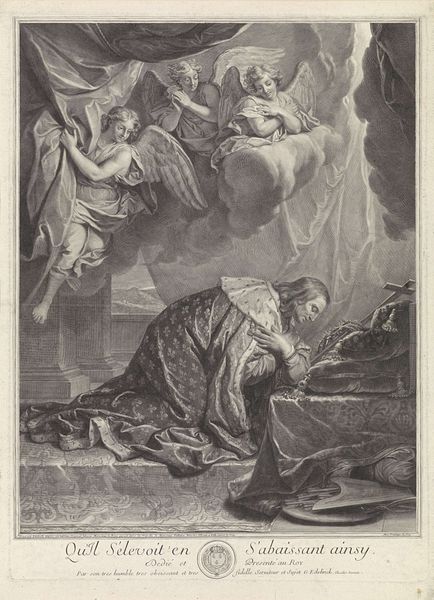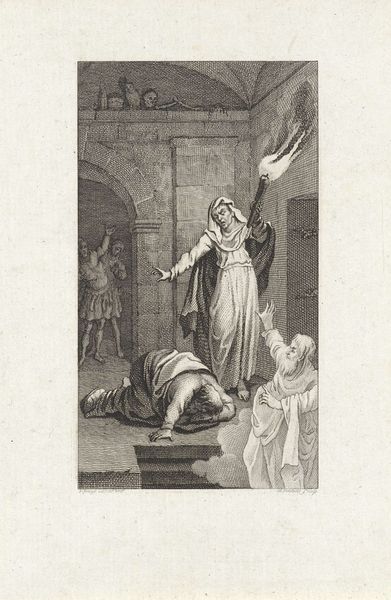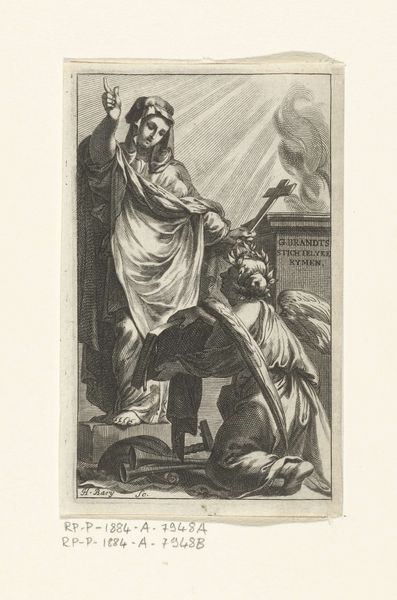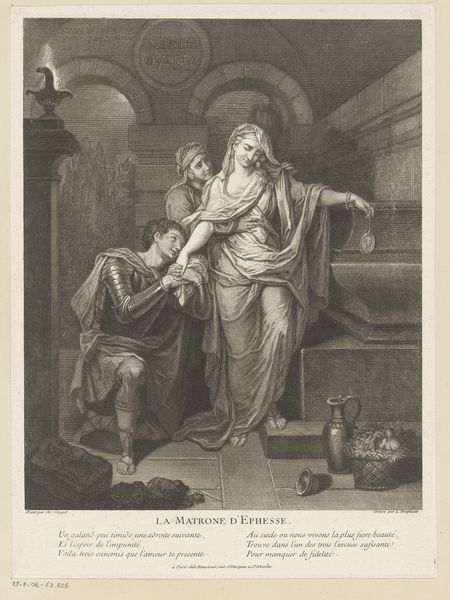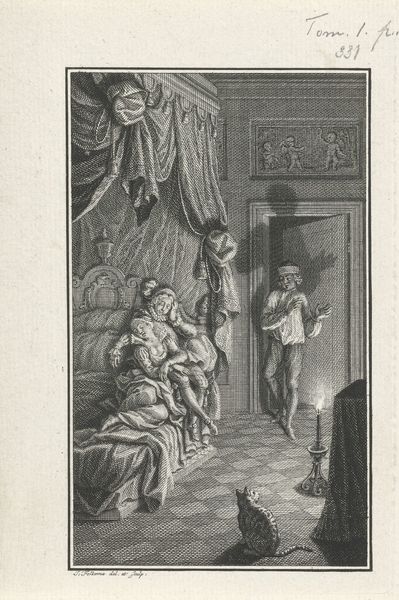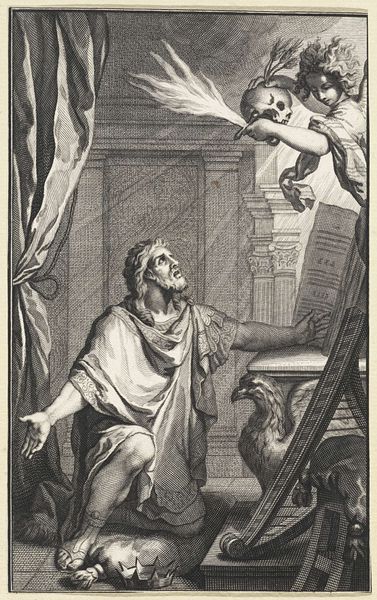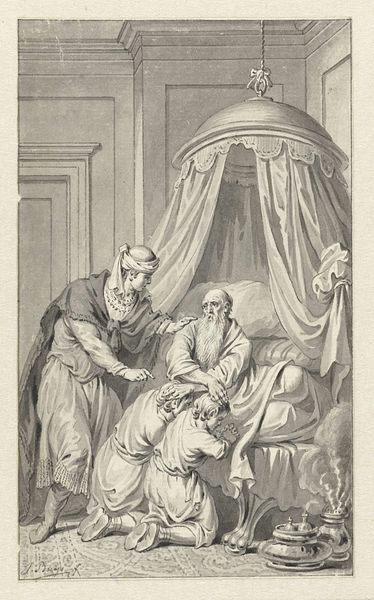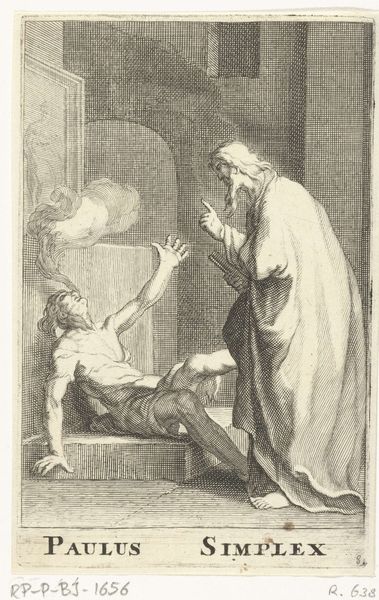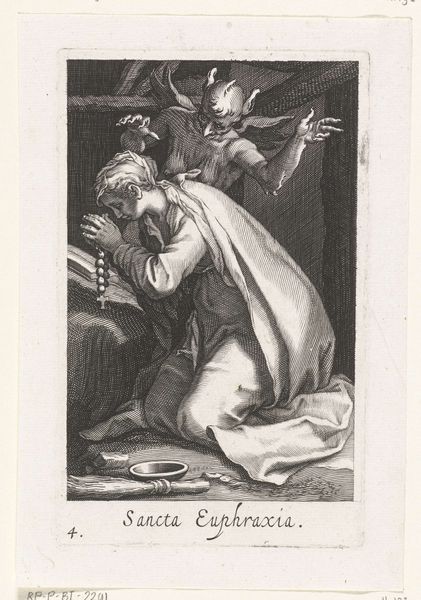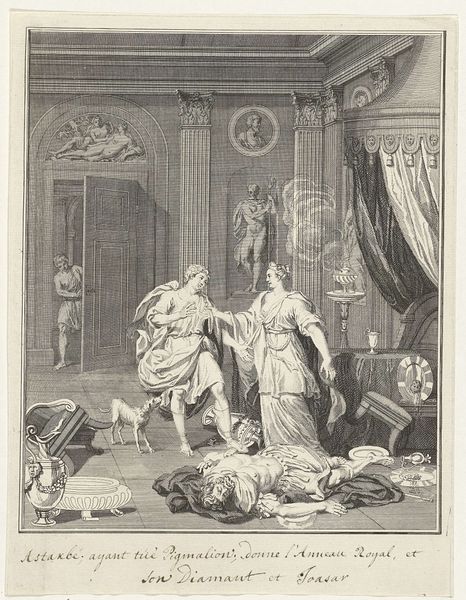
Dimensions: height 190 mm, width 141 mm
Copyright: Rijks Museum: Open Domain
Editor: So this is "God Appearing to Solomon," an engraving by Reinier Vinkeles from 1767, currently housed in the Rijksmuseum. The level of detail is amazing! But the scene feels rather... staged, I suppose? How would you interpret this work? Curator: It’s more than just “staged,” I think. We have to consider the social context. Engravings like this circulated widely in the 18th century, informing and reinforcing specific interpretations of biblical stories. Think about it – what does the artist's decision to depict God as radiant light, rather than a figure, tell us about the prevailing theological and political climate? Who was this image made *for*? Editor: Ah, interesting! So, the radiant light is less about literal depiction and more about communicating divine power in a way that resonates with Enlightenment ideals? And it would appeal to certain audiences? Curator: Exactly. It’s also crucial to recognize how the artist uses the image to reinforce social hierarchies. Notice Solomon's luxurious bedchamber? How might that influence our understanding of power, faith, and wealth during the period? What's absent in the representation too, and why? Editor: I didn't even notice the setting so closely at first! All those details contribute to constructing a particular image of Solomon as a divinely sanctioned, powerful ruler... Were there challenges to this kind of narrative at the time? Curator: Always. Thinkers were beginning to question established authority. Prints like this, while seemingly devotional, participated in complex dialogues about power and its representation. What is "truth" in an image? Editor: This makes me see the work in a totally new way! I was just looking at the aesthetics, but now I get that the engraving participates in a whole web of cultural and political meanings. Thanks! Curator: Absolutely! Remember, art is never created in a vacuum. Considering its social context opens up fascinating possibilities for interpretation.
Comments
No comments
Be the first to comment and join the conversation on the ultimate creative platform.
